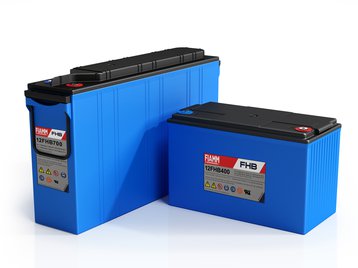Batteries are at the center of public debates as never before. They are essential in supporting the decarbonization plan in applications like mobility and energy storage.
These applications, among others, need data center support to deliver the best possible performances reducing energy and critical raw material usage. But since their introduction, data centers rely on batteries connected to the UPS system to operate without service outages.
The battery system in a data center provides instantaneous power continuity to support power drawn down from the grid. Batteries are usually designed to take up short-term needs and maintain power for five to 10 minutes in most Western areas, although it can be substantially longer in areas where power cuts or power shading are more frequent or regularly planned. Beyond that time and when longer support is needed, a diesel generator or other means of power generation like fuel cells continue to power the site.
Battery technology options
For decades lead batteries have essentially been the only option available in the market offering the required features. Over the years, their design has evolved, improving energy density, and reducing service needs.
The last decade has seen the introduction of lithium as alternative to lead. Lithium offers several advantages, like lower weight, better cycle life and reduced footprint in some designs. That said, lithium comes with its drawbacks, predominantly linked to the inherent instability of lithium, which needs proper control and management to remain within safe operational limits.
For this reason, all lithium-based batteries include a Battery Management System (BMS) which is designed to protect the battery, provide alarms and disconnect it from the load in case the controlled parameters surpass the safety window.
FIAMM recommendations
Whilst initial cost is a major deciding factor, there are other elements that data center operators must consider. Data center technical and purchasing teams evaluate a menu of criteria which ultimately equate to a total cost of ownership. As well as product performance, delivery, safety, quality, new factors now need to include environmental and legislative requirements.
At FIAMM Energy Technology we believe battery safety and reliability should not be questionable. In light of a recent accident involving lithium batteries, resulting in major damages to data center infrastructure, we recommend the use of lead-based batteries with flame retardant containers to support the UPS systems, while we recommend the implementation of lithium batteries in hybrid systems where they are supporting grid functions and energy storage.
Recent cases have proven that in the event of a malfunction, once the BMS loses control of the battery, fire suppression becomes incredibly difficult. Therefore, the latter batteries should be installed with proper physical segregation, if not in a dedicated container separate from the main data center facility.
Hybrid solutions can also be considered, with lead batteries providing grid frequency control support in addition to back up and lithium batteries providing energy storage services for intermittent renewable energy sources.
Lead batteries are recyclable in close loop
All FIAMM batteries are 99 percent recyclable with residual value due to their lead-based construction. The lead grids inside each battery are reprocessed and sent back into the industry to make new batteries. Studies have demonstrated that there is no detrimental performance loss in a new battery using secondary material.
Recently approved European Battery Regulations stipulate that by 2031, 85 percent of recycled lead is to be used for any new batteries introduced into the EU market. The same target given for lithium is six percent in 2031 and 12 percent in 2036, demonstrating the economic and technical challenges in recovering material from spent batteries.
FIAMM Energy Technology uses a mixture of new and re-processed lead with the latter already representing 80 percent of all lead used in the production plants. Therefore, we are confident to match the 85 percent target well before the given deadline limiting mining activities with social and environmental benefits.
Designing a cost-effective solution
Energy costs, particularly those used for cooling systems, are a major expense and concern for data center operators.
FIAMM Energy Technology has developed the ‘FHB range’ that reduces these costs by introducing a product designed to operate at higher ambient temperatures.
A recent cost study calculated that by adjusting cooling temperatures in the data center, an operator could achieve significant savings. The study revealed that compared to the equivalent lithium system, an advanced lead acid system designed to operate at elevated temperatures costs almost 30 percent less.
In conclusion, with the demand for data storage set to grow to more than 180 zettabytes by 2025, there is no doubt that data center industry is crucial to the development of both our society and economy.
At the same time, there is a need to reduce overall environmental impact by reducing the costs and energy required to maintain and recover materials, granting more efficiency and less effort. FIAMM Energy Technology is constantly working with customers to develop ever more advanced lead-acid batteries to help meet these challenges.
More from FIAMM Energy Technology
-

Sponsored Suppliers and the data center challenge
FIAMM Energy Technology has developed a special-purpose battery, designed to help meet the current demands of data center operators
-

Sponsored Why the data center industry will continue to choose lead batteries
A UPS is a major investment that must reliably run for years. That’s why lead batteries are the main choice for a number of critical reasons, writes FIAMM’s Nicola Corradin
-

Sponsored Lead-acid batteries will continue to be the first choice for power backup
Regardless of the chatter about alternatives to lead-acid batteries, it remains the best technology for backup


